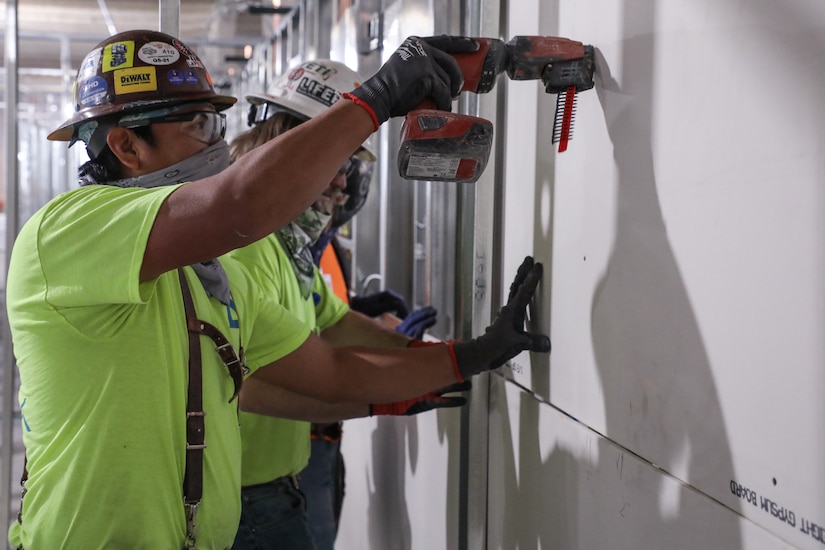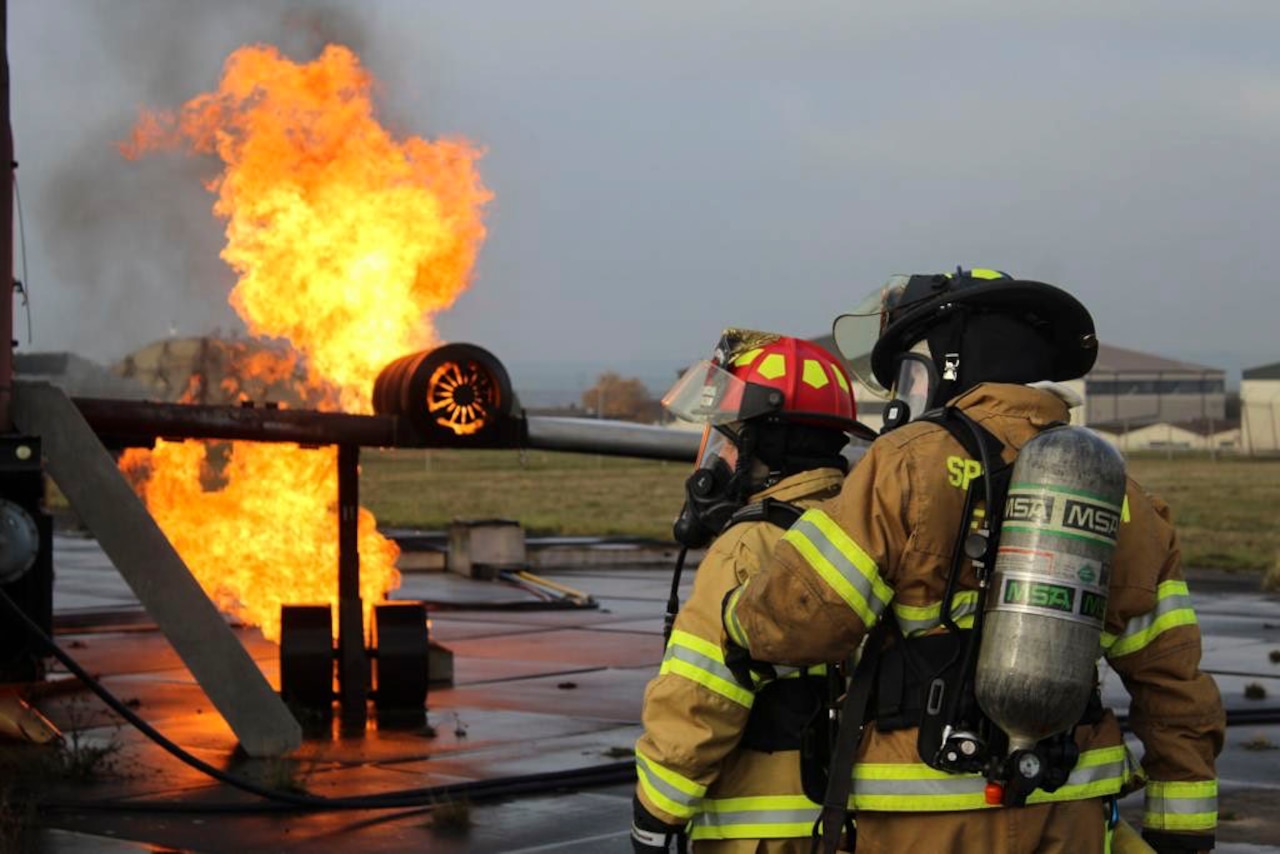May 19, 2020 | BY ROD HAFEMEISTER
A "protestor" approached the gate at Naval Air
Station Kingsville, Texas, wearing an inert personal-borne improvised explosive
device — a fake bomb vest — during a security training exercise.
With or without the COVID-19 pandemic, which affected this
May 12 exercise, the station's security forces need to be able to respond to
any emergency.
Naval Security Forces personnel ordered the simulated
protestor to halt, drop the vest and walk backward toward the gate.
Navy Petty Officer 1st Class Joshua Cannon, the drill
evaluator, called a temporary halt to conduct "reach-through"
training.
After removing the handcuffs, Cannon demonstrated how to
make the suspect lock his hands behind his back and bend forward — after which
Cannon grasped his fingers.
"This way you have more control over him," Cannon
said. He then demonstrated the most effective way to handcuff the suspect.
Cannon demonstrated all this while keeping his face mask in
place — such is the way of training during COVID-19 — working for realism while
also protecting personnel from potential exposure.
"That's the reality of training. They're not always
going to maintain 6 feet of separation because they have to handle
people," Randy Foust, the base training officer, said. "It's their
job."
The gate protest was part of a series of six anti-terrorism
training exercises conducted on NAS Kingsville that day. Other scenarios
included a simulated unmanned aircraft system crash on base, a driver who
failed to stop at the entrance gate, an active shooter situation, a bomb in a
car and a hostage situation.
Besides base security forces, the exercise included Fire and
Emergency Services personnel responding to simulated injuries, and role players
acting as representatives of city and county emergency agencies, hostage
negotiators, explosive ordnance disposal experts and Naval Criminal
Investigative Service agents.
To facilitate a comprehensive training evolution, the base
Emergency Operations Center, which used multiple conference rooms with video
capabilities to ensure compliance with Navy physical distancing mandates, was
activated.
Joseph Richardson, the base anti-terrorism officer, said
such drills serve two purposes.
"They not only let us train our watch standers, they
also let us validate our plans and see if we need to make changes," he
explained.
The COVID-19 safety measures are an additional challenge, he
continued. "Sometimes we do not have time to take extra precautions when
responding to an incident," Richardson said.
The exercises were conducted in training mode. This provides
the opportunity to correct mistakes on the spot or in briefings immediately
after a particular drill, Richardson said.
There is also an evaluation mode.
"That's where we evaluate how well they perform and if
they've retained their training," he said.
Despite the challenges posed by COVID-19 safety measures,
such exercises are essential to keep the base ready for actual emergencies.
They also ensure the base remains on track with the Navy's shore training and
certification cycle.
The 18-month cycle, managed by Navy Installations Command
and U.S. Fleet Forces Command, begins with a Command Assessment of Readiness
and Training, or CART.
A successful CART is followed by a regional assessment nine
months later. The last part of the cycle is the Final Evaluation Problem —
success results in certification that is good for 18 months before the cycle
begins again.
In 2017, NAS Kingsville was the first installation certified
under the program, and in January 2020 it completed its second regional
assessment. Scheduling for the Final Evaluation Problem is pending due to
COVID-19 travel restrictions.
In the meantime, similar exercises will occur on a regular
basis, Foust said.
"Our goal is to be ready," he added.
(Rod Hafemeister is assigned to Naval Air Station
Kingsville.)










